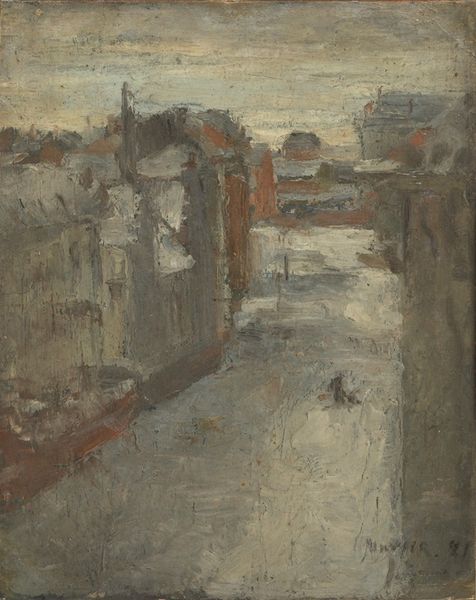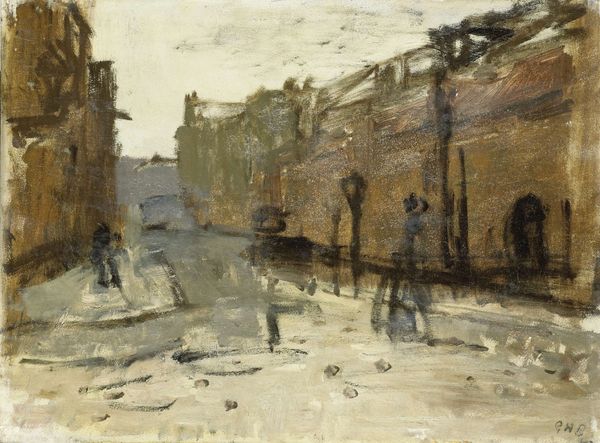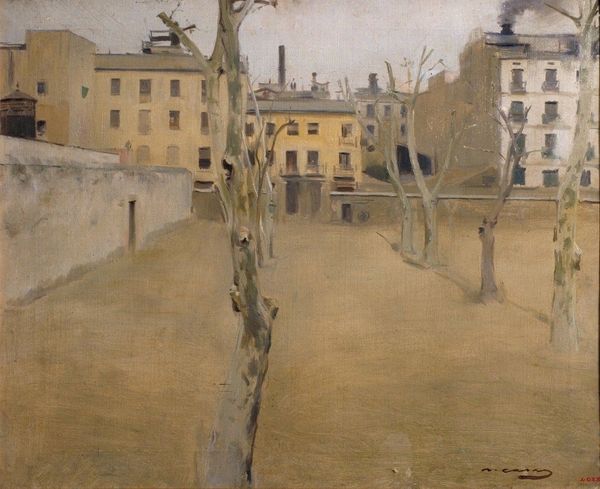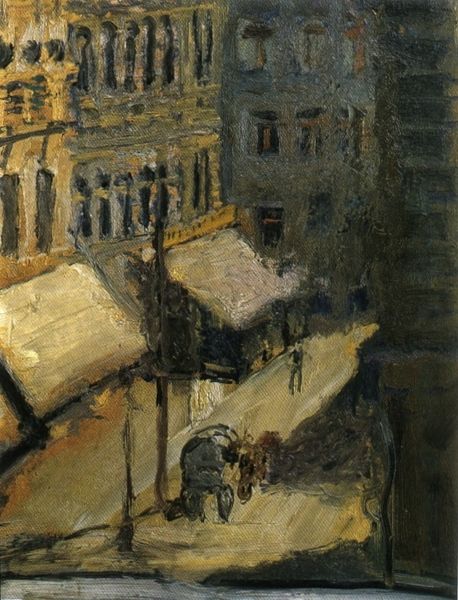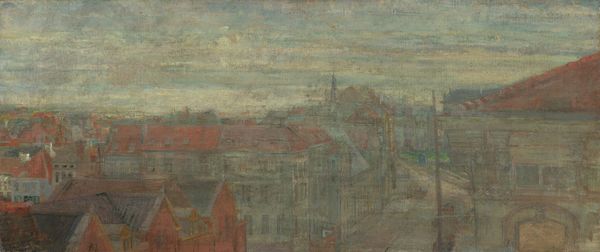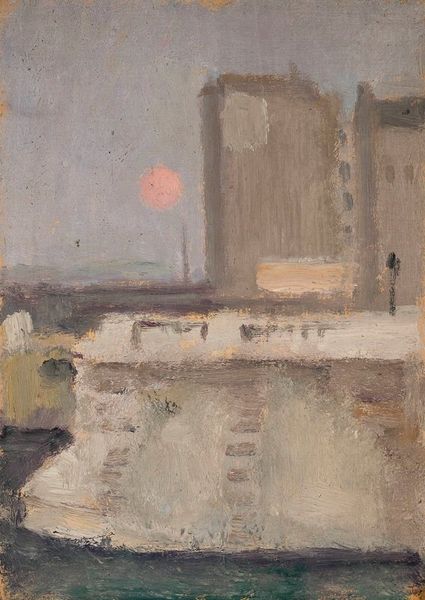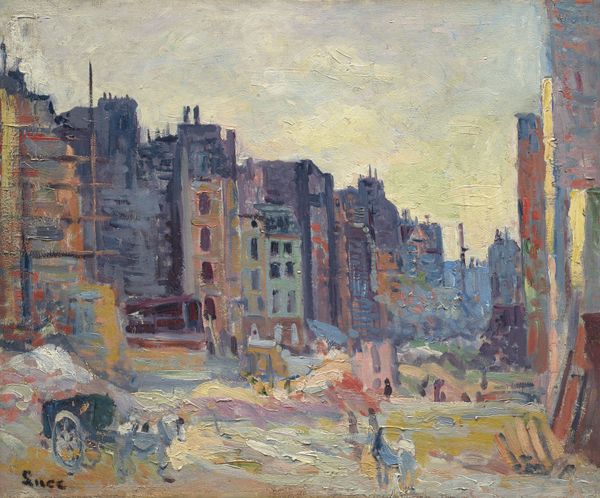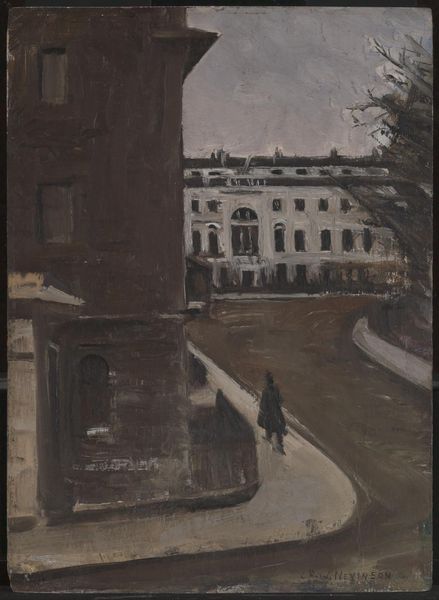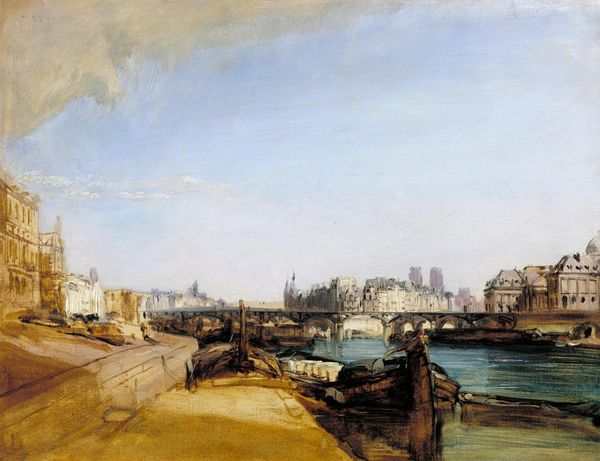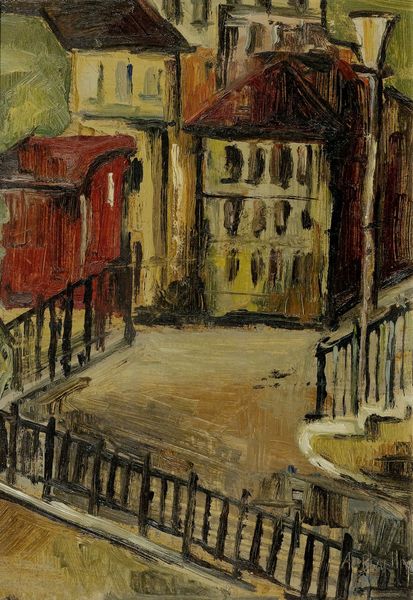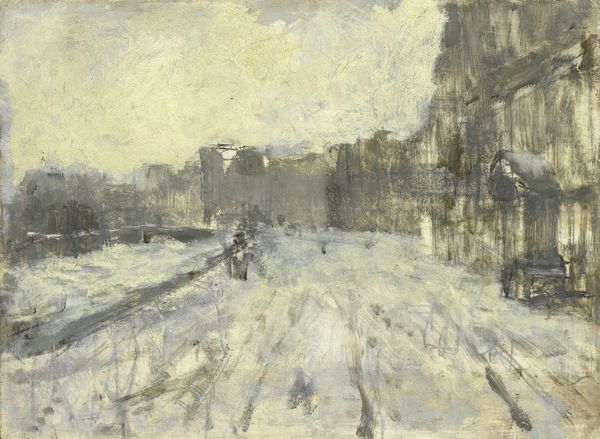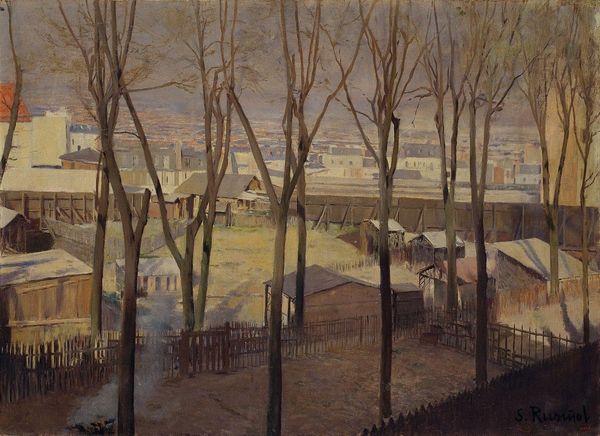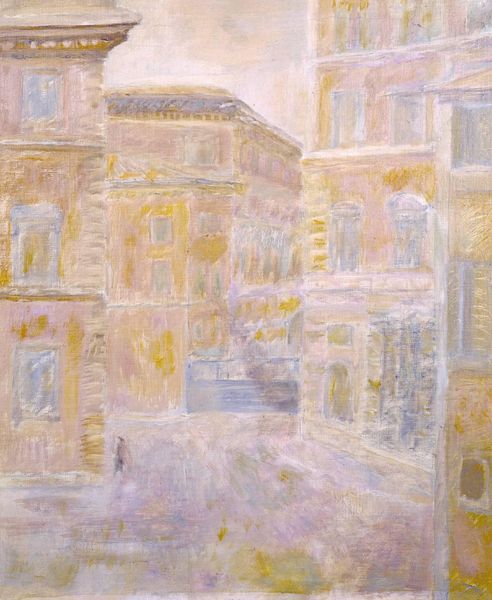
Dimensions: support: 509 x 764 mm
Copyright: © The estate of Sir Lawrence Gowing | CC-BY-NC-ND 4.0 DEED, Photo: Tate
Editor: This is Sir Lawrence Gowing's "Wellington Square," currently residing in the Tate Collections. It has such a subdued and almost melancholic mood. What can you tell me about this work through a historical lens? Curator: Gowing, though known for abstraction, demonstrates here an interest in urban spaces and their socio-political context. The blurred lines and muted tones could reflect a post-war Britain, grappling with identity and reconstruction. Do you see how the architecture almost imprisons the scene? Editor: Yes, it feels very enclosed and perhaps even isolating. Curator: Precisely. Gowing is not just painting a square; he's subtly commenting on the psychological impact of the built environment on its inhabitants. It makes me wonder, who is this painting for, and who does it leave out? Editor: That gives me a lot to consider, especially thinking about how art shapes public perception and tells a story. Thanks! Curator: Indeed. It has given me pause, too.
Comments
tate 6 months ago
⋮
http://www.tate.org.uk/art/artworks/gowing-wellington-square-t06489
Join the conversation
Join millions of artists and users on Artera today and experience the ultimate creative platform.
tate 6 months ago
⋮
As a Conscientious Objector Gowing was exempt from service on condition that he continue painting. In 1944 he went to Wellington Square, London. This work, a view down the Square from the balcony, was one of the first pictures made there. It is painted in the realist style of the Euston Road School established in 1937 by Claude Rogers, William Coldstream and Victor Pasmore. Aware of the failure of modern art to reach the public, they opposed what they felt to be the pretentious posturing of the avant-garde with an art based on an objective appraisal of the subject. Gowing combines careful observation with a poetic sensibility, suggested here by hazy light which envelops the scene. Gallery label, September 2004
